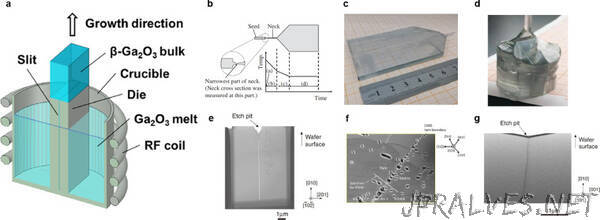
“Recently, the 68th IEEE International Electron Devices Meeting (IEDM) was successfully held in San Francisco, USA. As a flagship conference for microelectronics and nanoelectronics, IEEE IEDM is the world’s preeminent forum for reporting technological breakthroughs in semiconductor and electronic device technology, design, manufacturing, physics and modeling, the “Olympics” of integrated circuits and semiconductors.
Two research papers on Ga2O3 devices by Prof. LONG Shibing’s group from the University of Science and Technology of China (USTC) of the Chinese Academy of Sciences (CAS) were successfully accepted by the conference, which is the first time that USTC has published papers in IEEE IEDM as first author affiliation.
1. High-Performance Vertical β-Ga2O3 Schottky Barrier Diodes
How to develop effective edge termination structures to mitigate the edge electric field of the Schottky electrodes is currently a heated topic. The construction of edge termination structure in P-N junction devices has been a challenging problem due to the currently unresolved Ga2O3 P-type doping technique.
The study optimizes the charge concentration in the JTE region through rational design to ensure that the forward characteristics of the diode are not affected while maximizing the weakening of the Schottky edge electric field, thereby effectively improving the voltage withstand capability of the device. The optimized device achieves a low on-resistance of 2.9 mΩ·cm2 and a high breakdown voltage of 2.1 kV, with a power quality factor of 1.52 GW/cm2. In addition, a large area Ga2O3 Schottky diode was successfully fabricated and packaged using the optimized process, with a current density of 180 A/cm2 at a forward bias of 2 V and a reverse breakdown voltage of 1.3 kV. The research was published in IEDM 2022 under the title “High-Performance Vertical β-Ga2O3 Schottky Barrier Diodes Featuring P-NiO JTE with Adjustable Conductivity” and was selected as a Top Ranked Student Paper.
2. Alleviation of the Responsivity-Speed Dilemma of Photodetectors
Photodetectors are increasingly important in many fields, such as target tracking, environmental monitoring, optical communications and deep space exploration. Responsiveness and Responsivity-Speed are two key parameters for photodetectors. However, there is a constraining relationship between them. The problem is particularly acute in ultra-wideband semiconductor detectors, represented by Ga2O3 based materials, due to the lack of mature material defect control techniques.
Prof. LONG Shibing’s team alleviated the constraint by introducing an additional auxiliary light source to implement an Opposite Photogating (OPG) modulation scheme. The Ga2O3/WSe2 junction FET detector in this OPG scheme exhibited a negative Photogating (NPG) effect when irradiated by the deep ultraviolet target light, with the threshold voltage of the device shifting in the negative direction; in contrast, the device exhibited a positive grating effect (PPG) when irradiated by the auxiliary visible light source, with the threshold voltage of the device shifting in the positive direction. When illuminated by both the target light and the auxiliary light, the device integrates the positive and negative grating effects, but the overall threshold voltage shifts in the negative direction. In addition, the auxiliary visible light introduced in the OPG modulation scheme has little impact on key metrics such as the device’s light/dark current ratio and responsiveness.
Ultimately, when the visible light in the OPG solution was on, a increase of more than 1200 times in Responsivity-Speed was achieved at a sacrifice of only 10.4 % of responsiveness, successfully weakening the constraint between responsiveness and Responsivity-Speed. In particular, when the auxiliary light source is controlled via feedback circuitry to trigger only on the falling edge of the device response, an order-of-magnitude improvement in response speed is achieved without sacrificing responsiveness.
This work proposes a strategy to alleviate the constraint between responsiveness and Responsivity-Speed by sharing one auxiliary LED among ten million pixels in a photodetector chip, an essential reference for the comprehensive performance improvement of photodetector chips. The results were published in IEDM 2022 under the title “Alleviating the Responsivity-Speed Dilemma of Photodetectors via Opposite Photogating Engineering with an Auxiliary Light Source beyond the Chip.”“
